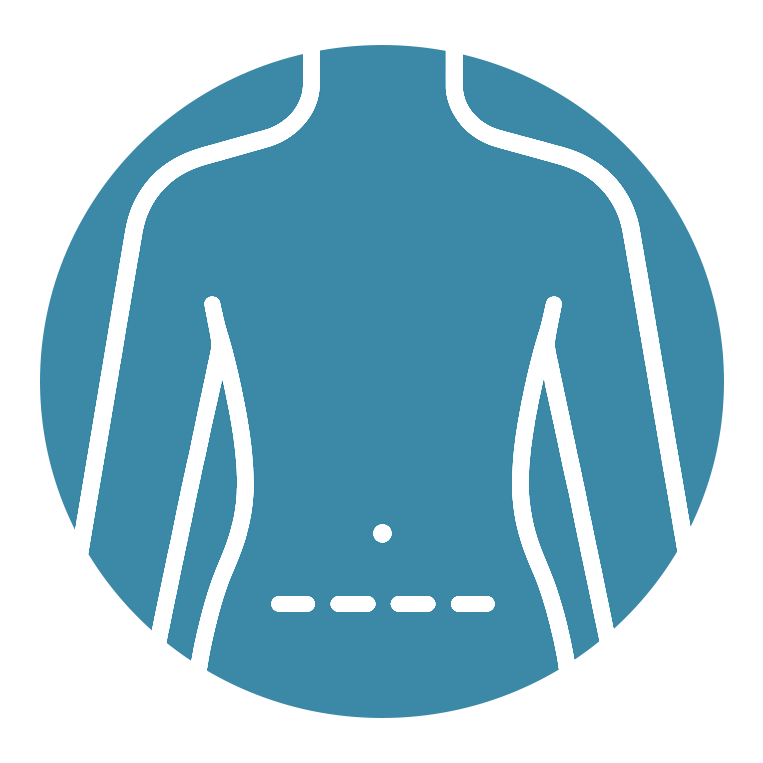
How to return to your body after the childbirth?
Plastic surgeries designed to address post-childbirth body changes are on the rise in popularity. Several factors contribute to this trend, including advancements in medical techniques, evolving societal perspectives, and more budget-friendly costs. Nevertheless, numerous inquiries persist, prompting plastic surgery experts to weigh in on two surgical approaches.
Abdominoplasty – not just for beauty
Karolis Černauskis, a plastic and reconstructive surgeon at Gijos Klinikos
Abdominoplasty procedures are most commonly undertaken in three scenarios. The first involves women who have given birth and experience separated rectus abdominis muscles after pregnancy, often accompanied by sagging skin and stretch marks in the lower abdomen. Another group comprises individuals who have lost a substantial amount of weight, resulting in loose skin across various body areas, including the abdomen. The third group of patients seeks treatment for hernias in different abdominal regions, such as umbilical, white line, or postoperative hernias.
However, it is most frequently necessary to perform these surgeries on women who have given birth. Why? Over time following childbirth, patients often observe noticeable changes in their abdominal appearance. Primarily, this presents an aesthetic concern. The abdomen protrudes, loses its shape, swells after meals, and even slimmer women may notice or feel a gap between the rectus abdominis muscles, a condition known as diastasis. The separation of abdominal muscles not only poses an aesthetic issue but also presents a significant medical problem. Patients may experience lower back pain, develop irregular posture, and face weakened pelvic muscles, leading to episodes of urinary incontinence. Additionally, their sexual life can be affected, and they may contend with persistent digestive problems. Furthermore, hernias are more likely to form between the separated abdominal muscles.
Abdominal muscle separation typically arises due to increased pressure within the abdominal cavity, often occurring after pregnancy. As the fetus grows, it seeks space within the abdomen, causing the muscles to separate. Consequently, pregnancy-related factors are usually implicated, including a large fetus, multiple pregnancies, excessive physical strain during pregnancy, a previous cesarean section, or a slender build. Other potential causes encompass a high quantity of fat, intense weightlifting, specific connective tissue disorders, and being older than 35 years. Therefore, abdominal muscle separation can affect individuals beyond just women.
Diastasis is diagnosed during a medical examination, where a gap between the muscles, sufficient for accommodating two or three fingers, indicates abdominal muscle separation. An abdominal ultrasound examination can provide precise measurements of diastasis width and identify potential hernias. Nevertheless, many patients are already aware of their abdominal muscle separation before their doctor’s visit, as they experience or notice the aforementioned symptoms and detect a gap between their abdominal muscles.
When preparing for abdominal plastic surgery, there are some essential considerations. While the preparation process is relatively straightforward, it is crucial to address a few key aspects. It is imperative to quit smoking and eliminate other detrimental habits, as smoking significantly impedes the healing of postoperative wounds. Moreover, engaging in physical therapy exercises, incorporating sports, and considering surgery only when desired results are unattainable are vital steps.
For achieving optimal aesthetic outcomes, abdominal plastic surgery can be combined with various other plastic surgery procedures, including liposuction, breast surgeries, and thigh lifts, among others. In such cases, the preparatory process for a comprehensive operation may differ. However, the decision to combine procedures is made on an individual basis, considering factors such as the patient’s blood parameters, coexisting medical conditions, and overall health.
Following abdominal plastic surgery, including the correction of diastasis, it is crucial to wear a specialized compression corset or belt for six to eight weeks. Additionally, it is imperative to avoid physical strain for a couple of months, with abdominal muscle exercises commencing only three months after the operation. Lymphatic drainage massages are recommended to reduce postoperative swelling.
Mommy Makeover – a comprehensive multi-area operation
Mantas Sakalauskas, a plastic and reconstructive surgeon at Gijos Klinikos
When a woman makes the decision to address not only her abdomen but also other areas of her body following childbirth, we carry out a procedure known as the ‘Mommy Makeover.’ Interestingly, despite its name, which suggests it’s tailored for women post-pregnancy, this operation is often sought after significant weight loss or for individuals who simply wish to address certain bothersome anatomical concerns that can be rectified.
The comprehensive ‘Mommy Makeover‘ procedure has been performed worldwide for over 30 years, and in Lithuania, it’s been available for approximately two decades. Recently, this operation has gained particular popularity as women increasingly opt for a single, all-encompassing surgery instead of several separate ones.
Women dissatisfied with the changes in their bodies during and after pregnancy typically opt for a comprehensive ‘Mommy Makeover‘ operation, which often involves the treatment of at least two areas, such as the abdomen and breasts. During this procedure, breast lifting and/or augmentation with implants, breast reduction, abdominal plastic surgery, liposuction from various areas, fat transfer to the buttocks, and various other body area surgeries such as thigh, arm, back, and buttock plastic surgeries, buttock lifting, and liposuction, can be combined. In some cases, upper and lower eyelid surgery, brow lifting, and even nose plastic surgery can also be included. However, combining a facelift with a body area operation is generally discouraged, as performing more than a three-area combined operation is not recommended due to the extensive nature of the intervention and significantly longer surgery time.
Are complex procedures like the ‘Mommy Makeover‘ safe? These surgeries are only performed when certain conditions are met: the patient must be free from serious concurrent diseases, not have harmful habits, maintain a normal body mass index, and have regular blood test results. If these criteria are met, complex procedures pose no significant risks. Such operations offer a range of benefits, including the convenience of a single anesthesia, a solitary painful recovery period, one rehabilitation process, and a single episode of incapacity. Furthermore, the results are more immediately apparent as multiple areas are addressed simultaneously. Lastly, there’s an economic advantage as the overall cost of these combined surgeries is lower. However, it is advisable that the surgery does not exceed 4.5 hours.
Additional tips:
Plastic and reconstructive surgery procedures are typically recommended no sooner than six months after breastfeeding has concluded, as the presence of hormones during breastfeeding can interfere with a smooth healing process. It is vital to understand that the postoperative period may entail some discomfort, so thorough preparation in advance is recommended to ensure that there are no issues while caring for a baby.
Mothers who have recently given birth often receive advice to wait for issues to resolve naturally. However, not all concerns can be addressed through the passage of time alone. If, a year after childbirth, breasts or the abdomen fail to return to the desired state, and a woman experiences discomfort as a result, it’s entirely reasonable to start exploring various solutions to the problem.
Source: “Mamos žurnalas”
 ABDOMINAL SURGERY
ABDOMINAL SURGERY